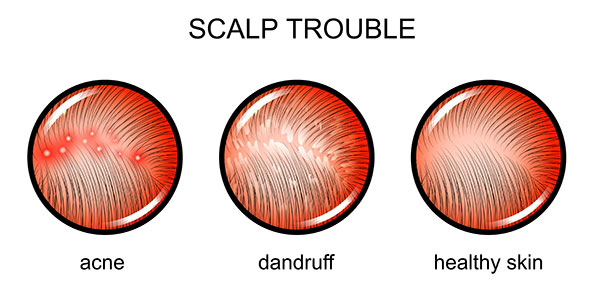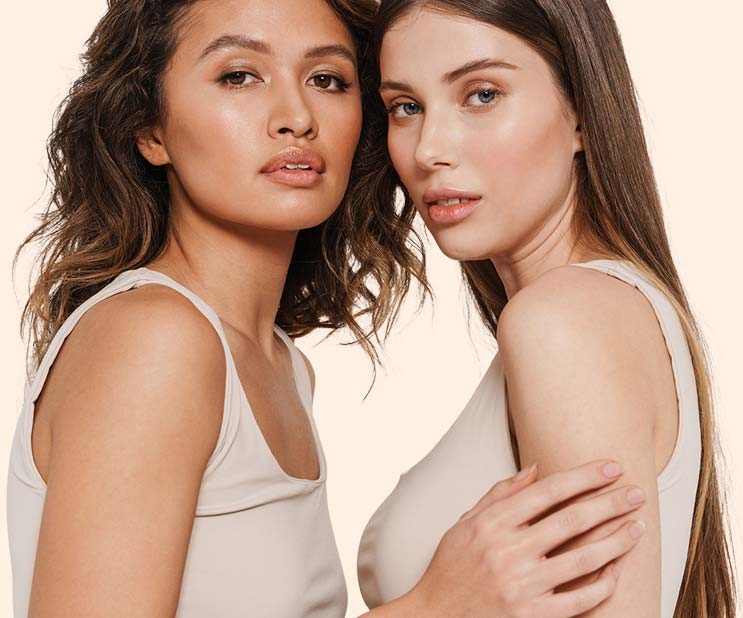Have you ever noticed small bumps on your hairline? Do you often feel pimple like bumps on scalp that hurt? Well, this could be a symptom of scalp pimples or folliculitis.
While this is commonly not something to be worried about, it can still be bothersome and can develop into more severe conditions. But what causes zits on scalp and what could you do about it? Read on to find out!
1. What Do Scalp Pimples Mean?

Scalp pimples, scalp folliculitis, or acne on the scalp commonly found along the hairline could mean that your scalp is not being thoroughly cleaned.These could also appear as pimples on back of head or underneath some hair.
Similar to acne or pimples anywhere on the face, scalp acne can form due to a buildup of oil, dead skin cells, and bacteria inside the pores or hair follicles.
Scalp acne can cause tiny itchy pimples or larger crusty and sore ones.
Depending on the severity, scalp pimples can be:
- i. Mild: whiteheads and blackheads
ii. Moderate: pustules and papules on the skin’s surface
iii. Severe: cysts and nodules embedded underneath the skin
2. What Are The Symptoms Of Scalp Acne?

Symptoms of scalp acne or folliculitis also vary based on the type and severity.
These are the most common symptoms:
i. Clusters of small red bumps on scalp similar to pimples, some with whiteheads
ii. Painful pimples on scalp or blisters that burst, ooze pus, and develops crusts
iii. Large areas of inflamed, red skin that may also leak pus
iv. Severe acne on the scalp such as dissecting cellulitis of the scalp (DCS) or acne necrotica can leave permanent scars and form blackened crusts. Areas of the skin may also be itchy, painful, and tender to the touch.
3. Why Do I Have Bumps On My Head?

While the actual cause of pimples on scalp or scalp folliculitis is not yet completely understood, it is commonly considered as an inflammatory reaction to microorganisms aggravated by bacterial infection.
The different types of organisms that trigger this inflammation include:
i. Propionibacterium acnes (P. acnes) which cause acne necrotica miliaris or Propionibacterium folliculitis. Acne necrotica miliaris, also known as Acne varioliformis or acne frontalis is a rare and persistent type of scalp folliculitis found mainly in adults and characterized by tiny pustules. Other symptoms are reddish-brown papulopustular umbilicated lesions (sunken centers) typically around the forehead and scalp.
ii. Staphylococcus epidermidis and Staphylococcus aureus which are bacteria that cause Staphylococcal skin allergy or infections.
iii. Fungus-like yeast that can cause Malassezia Folliculitis or the swelling, inflammation, and irritation of hair follicles.
iv. A type of mites can reside within hair follicles and cause a condition called Demodex Folliculorum.
On the other hand, clogged pores may be caused by:
v. Product buildup from gel, hairspray, wax, shampoo, and other hair products
vi. Not cleaning the hair regularly and thoroughly
vii. Wearing a headgear, equipment, or hat that may be too tight and cause friction that can irritate the scalp
Overproduction of the hormone dihydrotestosterone in men which can cause oily skin and scalp, clog the follicles, and inhibit the healthy growth of hair.
RELATED: 5 Surprising Solutions On How To Get Rid Of A Pimple On Your Nose
4. How You Can Treat Scalp Pimples

So, what can you do to address and treat acne scalp folliculitis?
There are various methods and acne treatments you can try, listed below:
Choose a Better Shampoo And Conditioner.
If you suspect that your shampoo or conditioner could be causing the mild to moderate pimples on your scalp, switch to anti-dandruff stuff or products that contain these ingredients:
- Salicylic acid – for cleansing oily hair and exfoliating dead skin cells to prevent them from building up in big pores and causing acne.
- Benzoyl peroxide – is a more effective alternative although it can potentially dry your scalp or bleach your hair, according to board-certified dermatologist, Dr. Janet Prystowsky.
- Glycolic acid or lactic acid – to exfoliate and kill micro bacteria on the scalp
- Tea Tree Oil – with antibacterial, antiseptic, and antifungal properties that help fight acne
- Ciclopirox, Zinc Pyrithione, Selenium Sulfide, or Ketoconazole – antifungal agents found in anti-dandruff shampoos
- Jojoba oil – to reduce inflammation and redness
A. Avoid Wearing Hats, Caps, Or Headgear That Are Too Tight

These can block airflow and cause sweat and oil to accumulate on the scalp. These also inhibit blood circulation and oxygen supply to the itchy scalp, making it more prone to damage.
B. Choose Hair Products Wisely
Scalp care is very similar to your usual skin care. Choose shampoos, conditioners, and styling products with no colorants, artificial fragrances, or other irritating ingredients.
Use oil-based products sparingly to prevent clogged pores. Invest in a sulfate-free clarifying shampoo if you use pomades, waxes, clays, or hairspray. This type of shampoo will remove product buildup, dirt, and excess oil from your hair and scalp. However, do not use it too often because it can cause dryness especially if you have chemically-treated, heat-damaged, or dyed hair.
C. Wash Your Hair With Vinegar

i. Vinegar is an acid that changes the pH of your scalp and possibly killing bacteria or making it harder for them to thrive. Simply add a tablespoon to a bowl of water and use this to wash the hair after shampooing and rinsing. Do not rinse off the vinegar.
ii. Do this only once a week, preferably in the evening because the smell can be unpleasant. Allow it to stay overnight. This trick is a treatment but can also be preventive method.
D. Give Your Hair And Scalp a Break
Stop or avoid using hair products aside from shampoo and conditioner until your scalp acne clears. This includes pomades, waxes, gels, and hairspray. Then, introduce the products one at a time to pinpoint which product or ingredients can be causing your acne.
E. Do Not Scratch, Pop, Press, Or Even Touch Your Pimples

These actions can make the situation worse and cause more irritation. Inflamed and yellow bumps can be popped, but you should be careful as it can cause more infection. To make sure it is pressed correctly, seek professional help.
F. Use Over-The-Counter Or Prescription Drugs.
Many OTC products like creams, medications, or ointments can be recommended by your doctor to clear scalp pimples.
These may include:
Topical antibiotics like fusidic acid gel, erythromycin solution, or clindamycin solution
i. Steroid creams or lotions
ii. Oral antibiotics or antihistamines
iii. Oral isotretinoin for severe acne
iv. Consult your doctor or dermatologist.
If your scalp still does not respond to these remedies and treatments or if you suspect your skin condition to be something else, visit your doctor for proper diagnosis. He or she may also suggest other pimple treatment methods like steroid injections, light therapy, or physical extraction.
The same goes if you notice bald patches or if your pimples on scalp cause hair loss and extreme pain.
“Hope you find the post helpful and we are excited to hear what you think of it!






